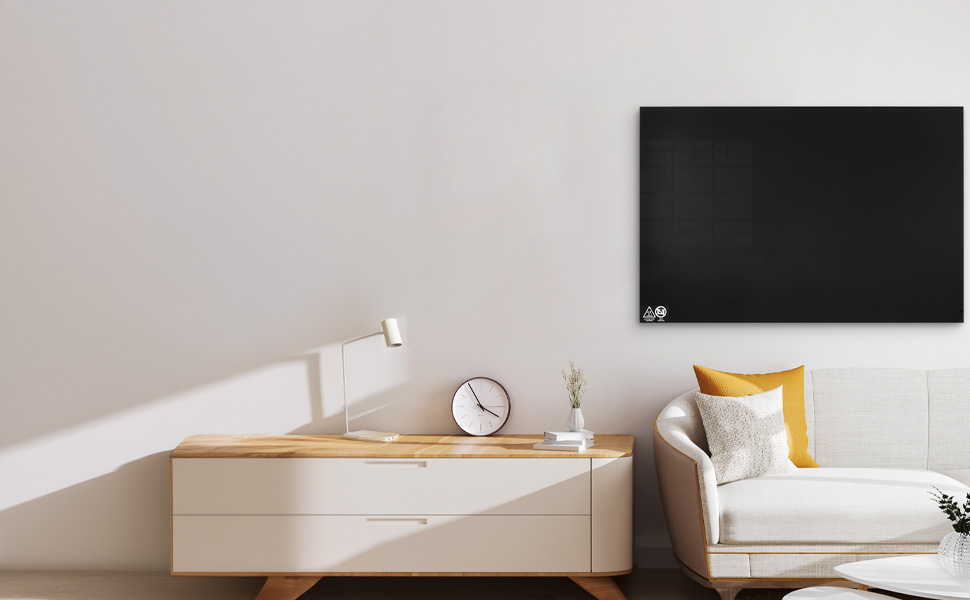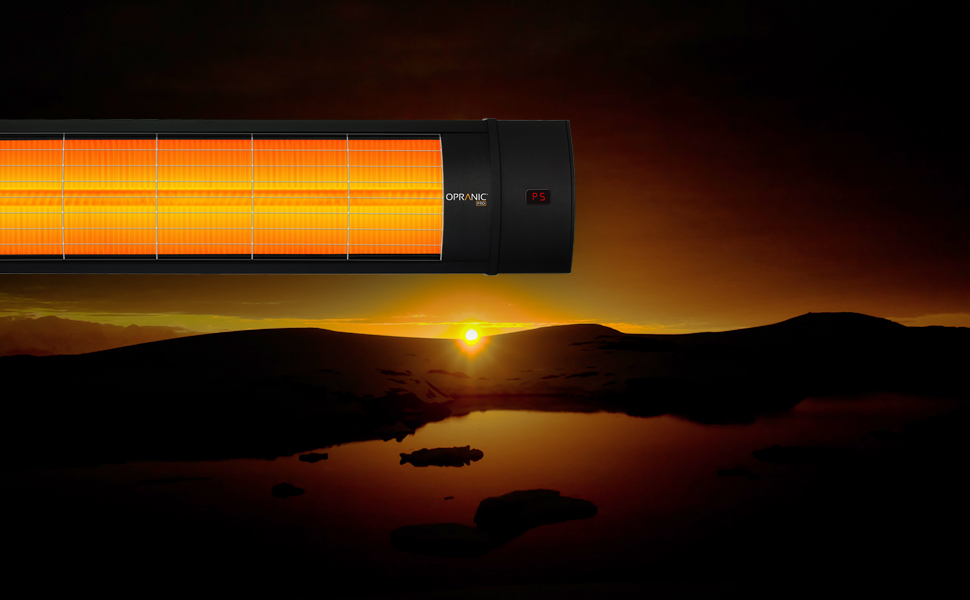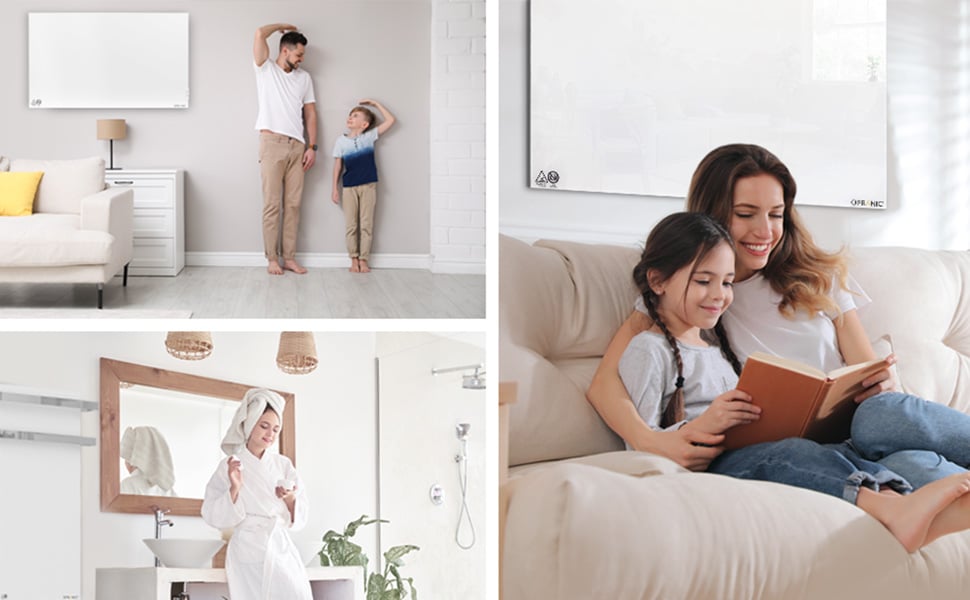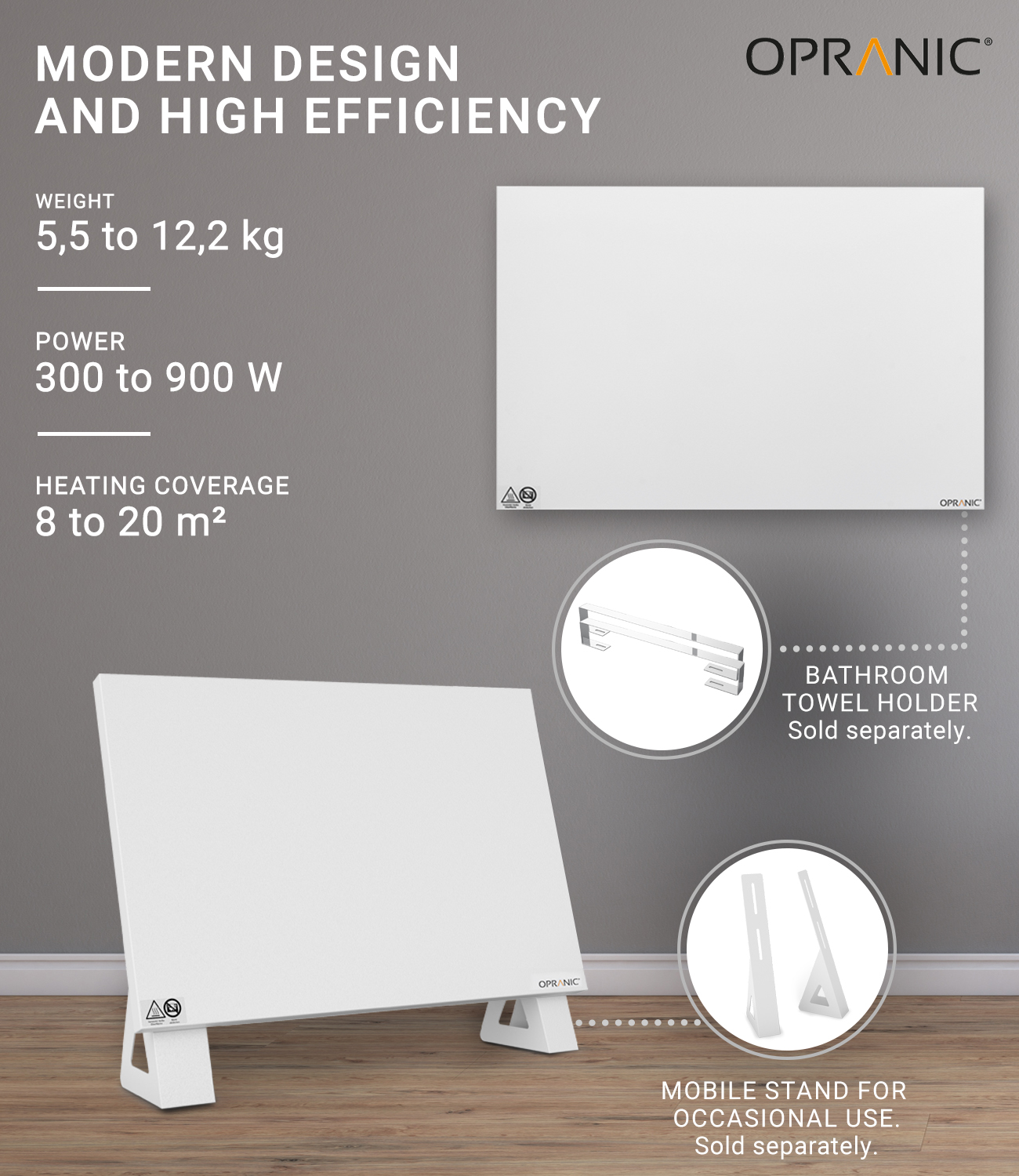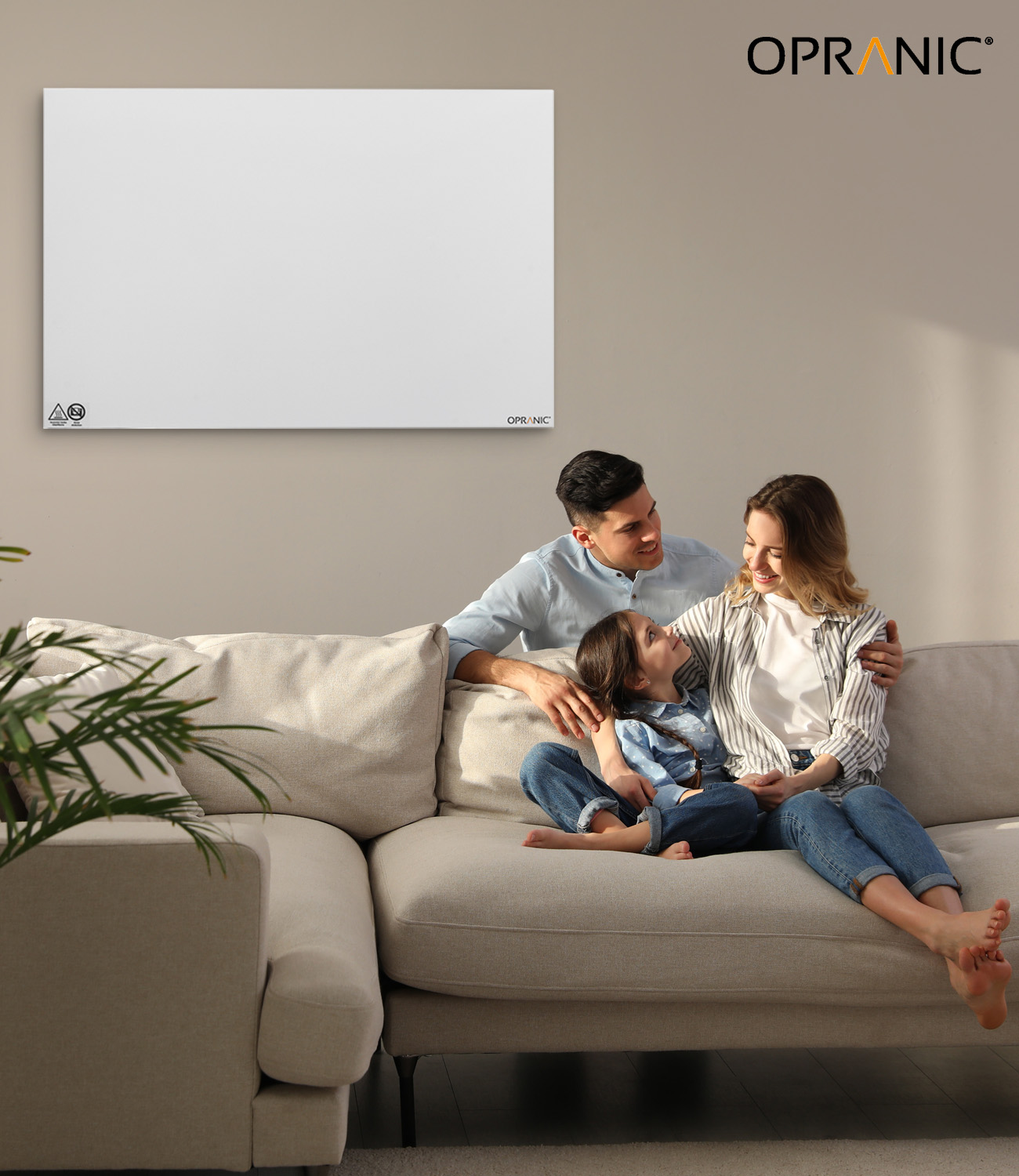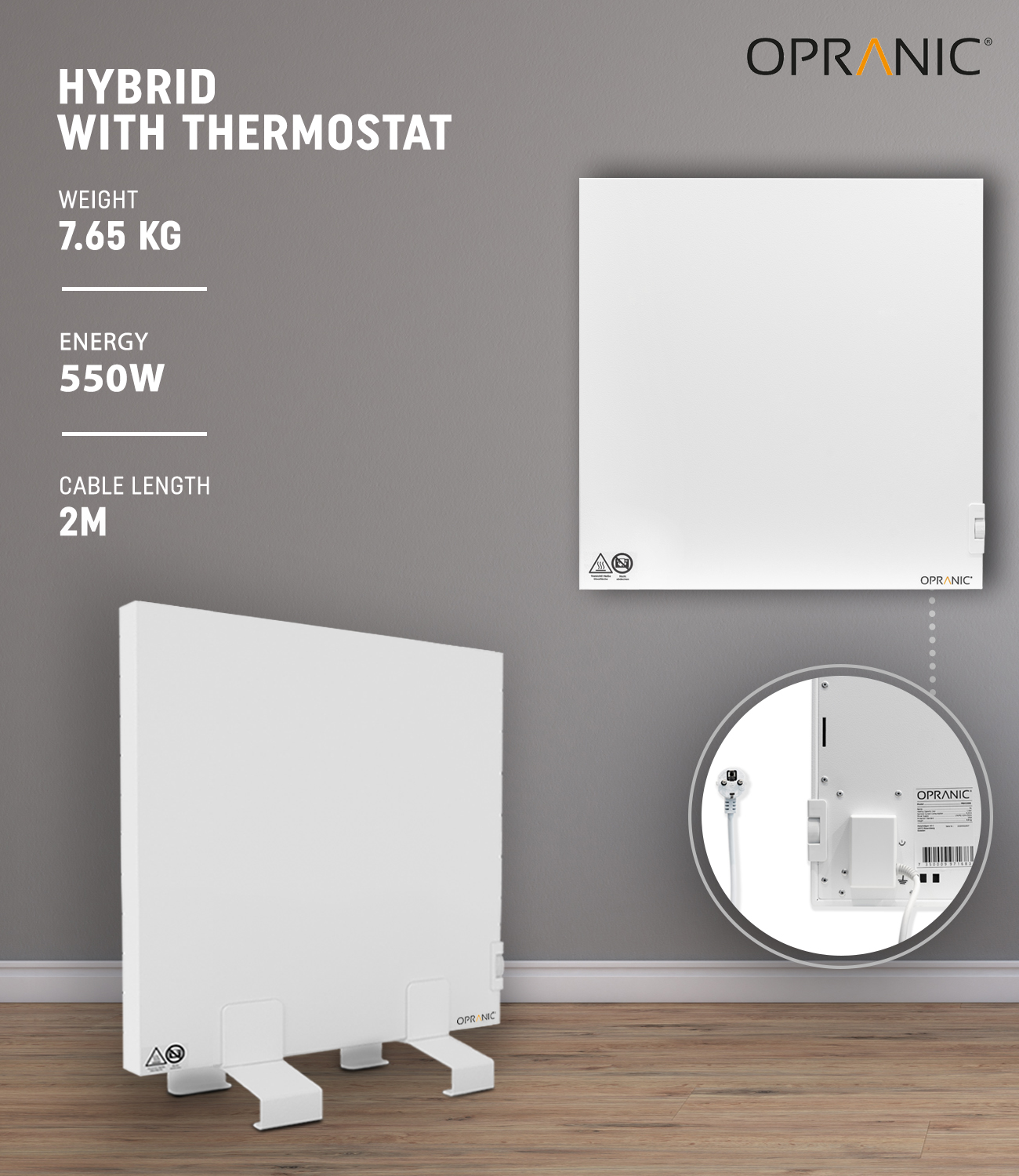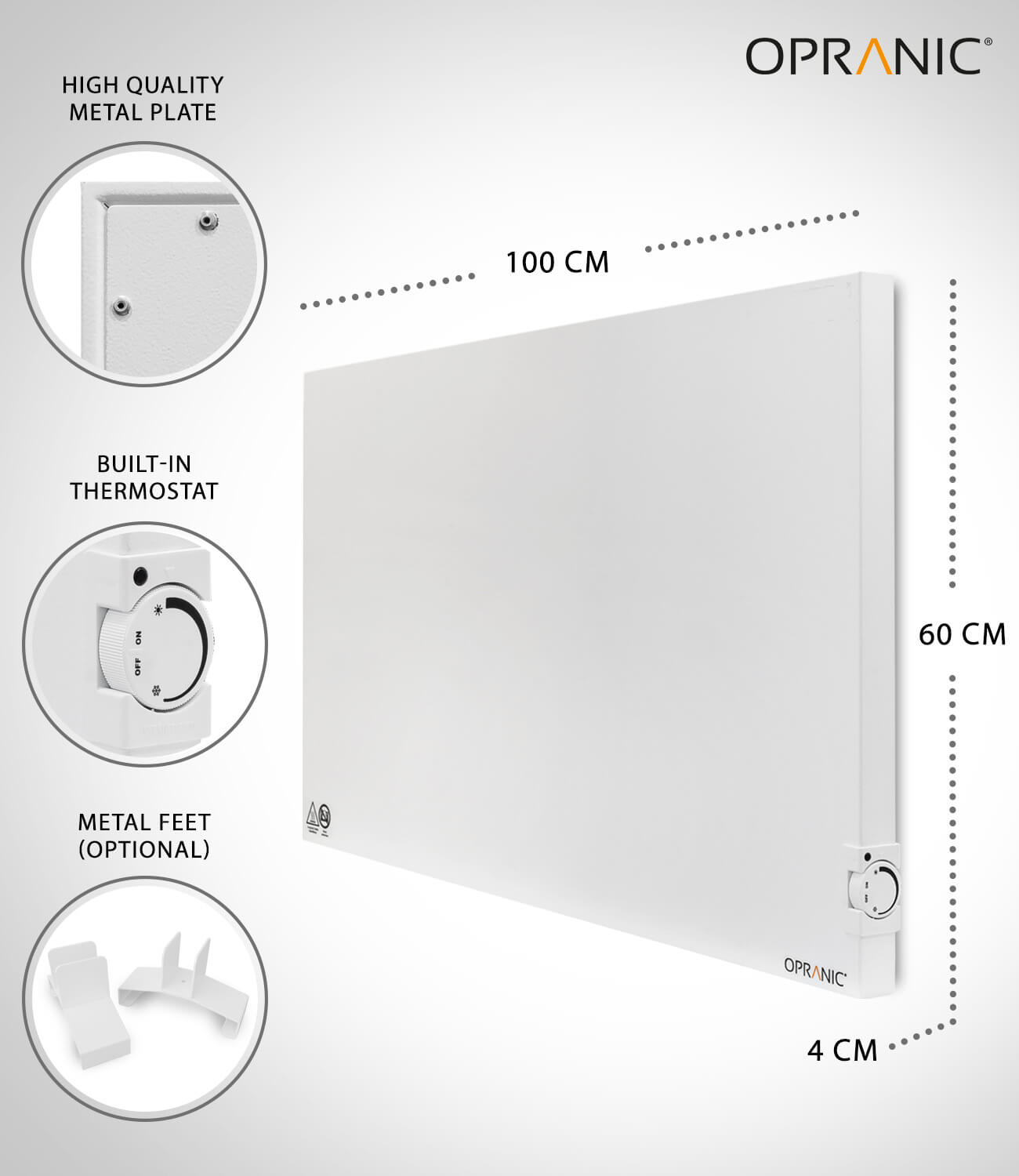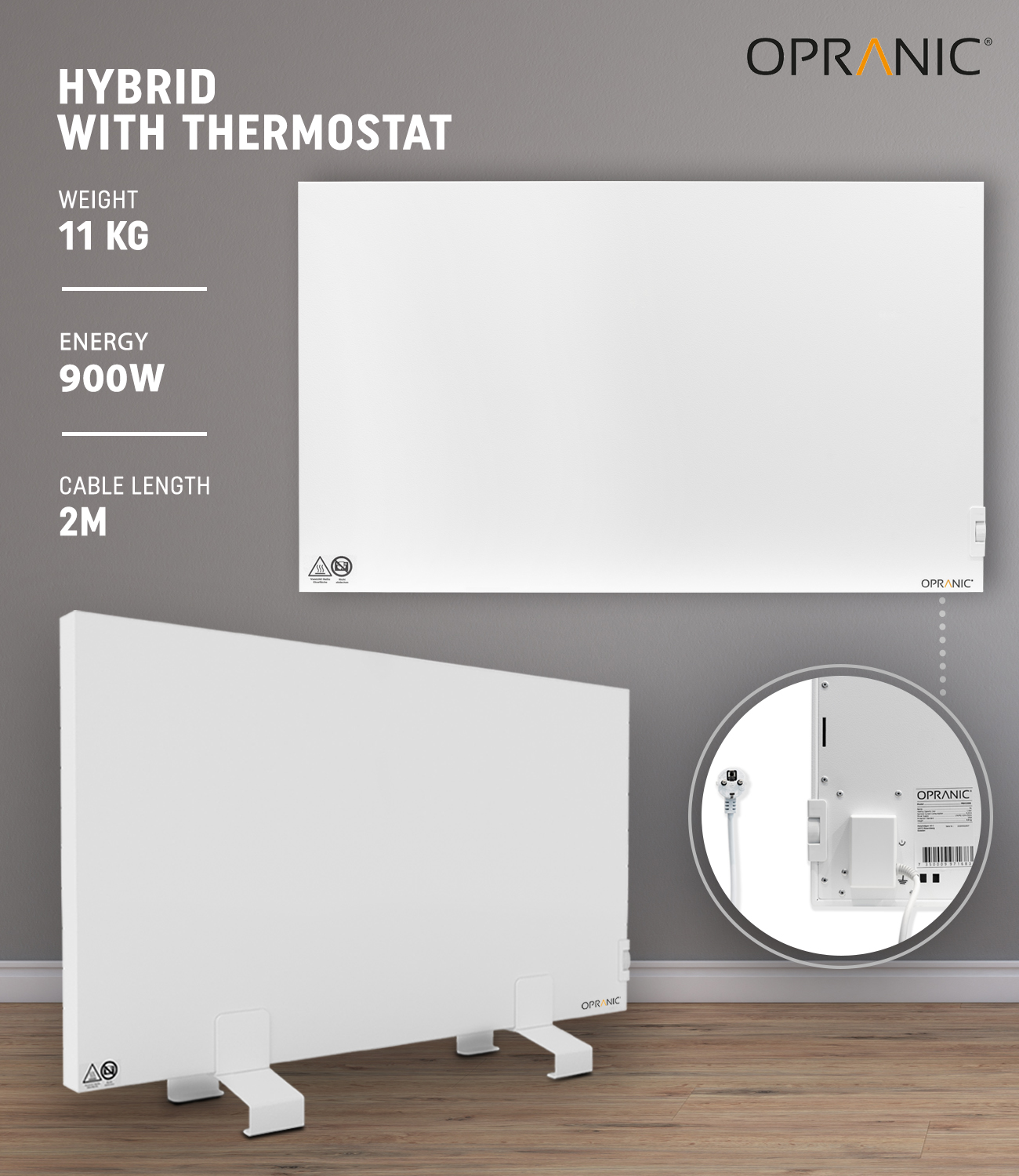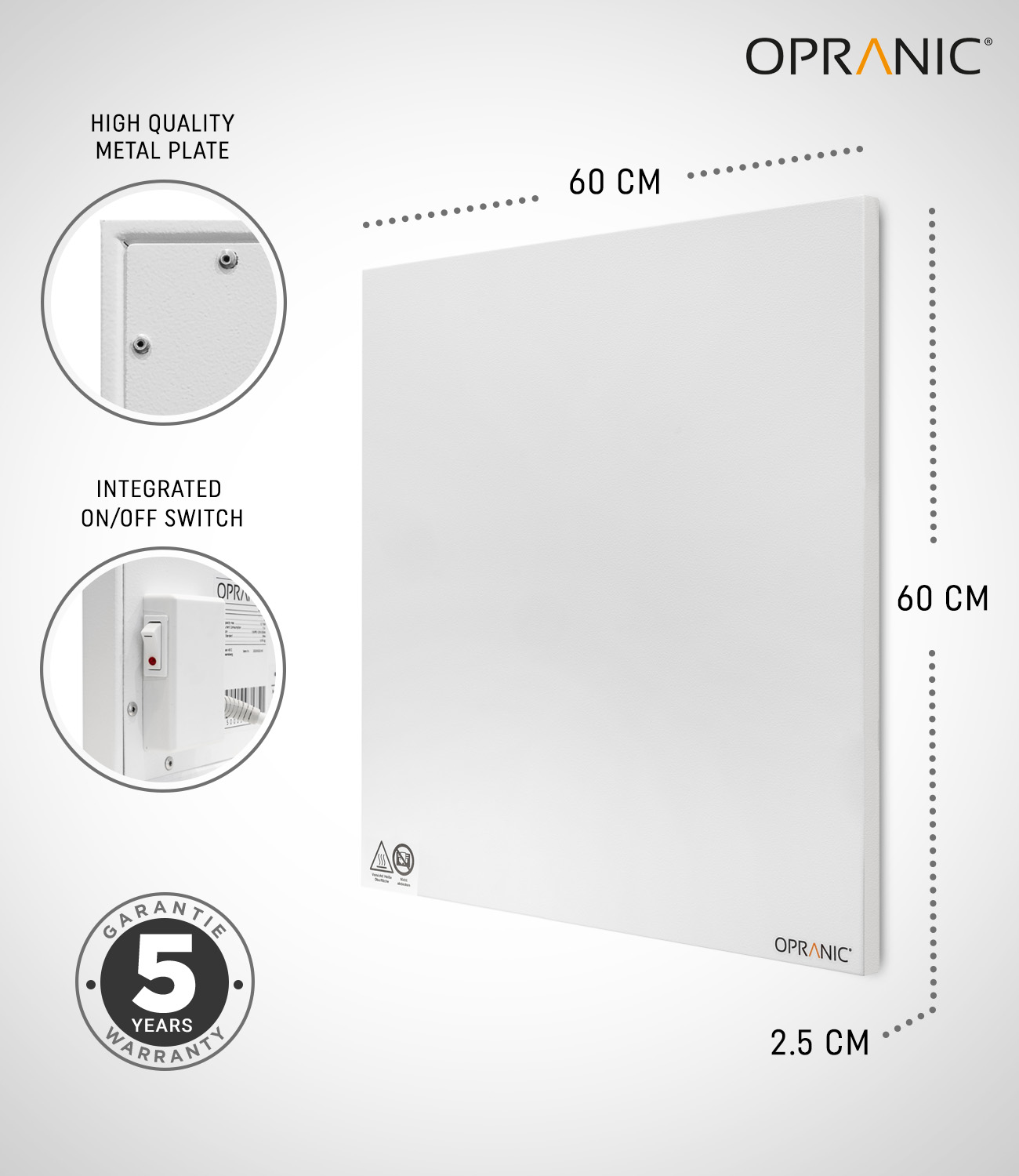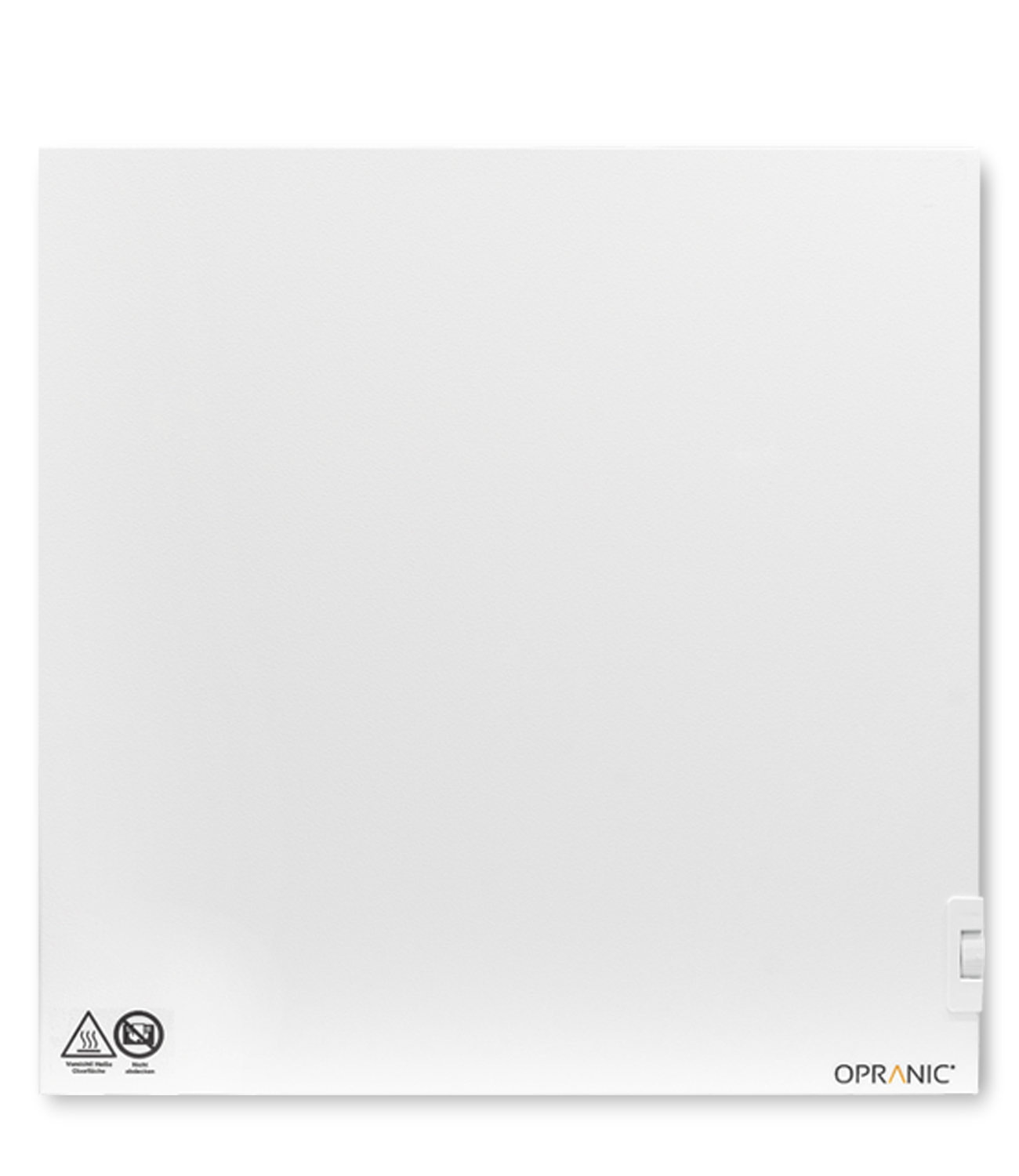Advantages with indoor infrared heating
Efficient indoor infrared heating provides a superior approach to warmth. Instead of wasting energy on heating the air like traditional heaters, our technology directly radiates heat waves to people and objects, ensuring minimal heat loss and a cozy indoor environment. This is one of the major advantages with indoor infrared heating.
This article is Fact-checked & cross-referenced, se below.
INFRARED HEATING VS. CONVECTION HEATING: THE MODE OF OPERATION IN COMPARISON
The process of heating all the air in the room with a conventional heater is inefficient. Heating all the air takes more time and energy than infrared heating. With conventional radiators, a lot of energy is lost because little warm air reaches people.
Although part of the heat waves also heats the surrounding air, infrared heating works mainly on heating the objects directly. Air does not have a high mass. Heat waves transfer their thermal energy mainly to objects in space, such as people, furniture and other objects with higher mass. This method differs from traditional heaters such as gas heaters or electric air heaters.
Electric heating with infrared brings instant and versatile heat, especially in places that do not require constant heating. By heating with infrared, they provide quick heat through direct heat waves and make you warmer in minutes.
Infrared heaters are also allergy-friendly, as they do not circulate air and dust that could disturb allergens. This is a good option for people with allergies. In addition, these electric radiators operate with absolutely no greenhouse gas emissions, which makes them environmentally friendly heating solutions.

Instant and versatile heat
Infrared electric heaters deliver fast and flexible warmth, ideal for areas that do not need constant heating. They can also complement existing systems to save energy and provide targeted comfort. Floor standing infrared units heat in a direct and focused way, helping reduce energy use and avoid heat loss. This effective heat delivery makes infrared heating panels a smart, economical choice for modern indoor heating needs.

Longer lasting heat with infrared heating
Even after the heater is switched off, infrared warmth remains in the room because walls and floors release stored heat. Heated surfaces radiate warmth naturally, allowing comfortable temperatures to continue without extra energy use. This unique effect makes infrared heating highly efficient and gives it a clear advantage over conventional systems in indoor environments.

UNIFORM HEAT DISTRIBUTION
OPRANIC heating wire technology avoids dangerous hot spots and ensures smooth, even heat across the surface. High-quality heating resistors are placed over the full panel and along the outer edges for balanced performance. This design guarantees steady radiant heat output while keeping energy consumption low, offering reliable and efficient heating every day.
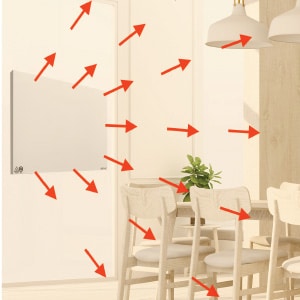
Efficient direct heat waves
Warm air escapes easily through open doors, windows, and drafts, causing heat loss and constant heating demand in traditional systems. Air also rises, making ceilings warm while lower areas stay cool. Infrared panels work differently, sending waves that warm people and objects directly instead of heating the entire room air. Even in drafty spaces, stored surface heat maintains comfort and reduces wasted energy, making infrared a superior and efficient choice.
THE INFRARED HEATING OFFERS SEVERAL ADVANTAGES
INFRARED HEATING BENEFITS
- Quick Warmth: Direct heat emission ensures immediate comfort.
- Zone Control: Install in specific areas for energy conservation.
- Energy-Saving: Direct heating reduces heat loss and energy use.
- Allergen-Free: No air circulation means fewer allergens, aiding allergy sufferers.
Nature of Infrared Heating
Everything, including humans, emits electromagnetic radiation. Infrared electric heating is natural, mirroring the sun’s warmth, a coal fire, and our body heat. With infrared heaters, you get sun-like warmth without harmful UV rays.
Why Choose Efficient Infrared Heaters?
- Drafty Rooms: Ideal for spaces with drafts, high ceilings, or poor insulation. Unlike traditional heaters that warm the air, infrared heaters are more effective and economical in drafty conditions.
- Instant Warmth: They provide immediate heat, making them great for seldom-used spaces or as a supplementary heat source on chilly days. They’re especially handy in bathrooms for quick warmth.
- Mold Prevention: Infrared rays dry damp walls, preventing mold in heated areas.
- Improved Air Quality: Unlike standard heaters that circulate dust, infrared heaters from OPRANIC maintain stable humidity, benefiting allergy sufferers.
- Eco-Friendly & Silent: OPRANIC heaters are resource-efficient, emission-free, and quiet, promoting a greener future.
- Hassle-Free Setup & Care: OPRANIC’s infrared electric heaters are simple to install and low-maintenance.
Infrared Heating Study by Leeds Beckett & Salford Universities, UK
Energy experts at Leeds Beckett and Salford Universities are investigating infrared heating systems for homes. They examine the advantages of infrared heating panels. As the UK aims for net-zero emissions, other heating options are also being considered. These include air-to-water heat pumps, hydrogen boilers, night storage heaters, and electric radiators. A mix of these alternatives may be necessary for the transition to net-zero emissions.
Professor Glew explained, “Infrared heaters are electric heating panels that emit some of their heat in the infrared frequency. The theory is that the user can heat the entire house to a lower temperature than normal, but still be comfortable. The goal of this project is to provide robust evidence of whether this theory can be put into practice in people’s homes, which could lead to lower energy use, lower heating costs, and fewer carbon emissions.”

AI-assisted
Fact-checked & cross-referenced • 31 Oct 2025
Report: Fact-check of “Advantages with Opranic indoor infrared heating”
1. Introduction
This report analyzes and verifies the claims in the article “Advantages with Opranic indoor infrared heating.” The core claims concern energy efficiency, health benefits (especially for allergy sufferers), and prevention of damp and mold. These statements were checked against independent sources, including technical publications, building-science resources, and the government-published study cited by the article itself.
2. Assessment of Key Claims
Claim 1: Improved air quality and allergy-friendliness
Verification: Strongly supported. This is one of the best-documented advantages of radiant heat.
- Mechanism: Conventional convectors heat air that then rises and circulates, inevitably stirring dust, pollen, mites, and other allergens
[1, 2]. - Outcome: IR heaters warm people and surfaces directly without relying on air movement, reducing airborne particles and improving indoor comfort for people with asthma or allergies
[2].
Claim 2: Prevention of damp and mold
Verification: Strongly supported. Multiple sources confirm this as a significant secondary benefit.
- Mechanism: Mold growth follows surface condensation when warm, moist air meets a cold surface. IR heating raises surface temperatures of walls, ceilings, and floors, rather than primarily warming the air
[3, 4]. - Outcome: By lifting wall surface temperatures, IR inhibits condensation and deprives mold of the moisture it needs. It also helps dry existing moisture in masonry, aiding fabric protection
[4].
Claim 3: Maintained indoor humidity (comfort)
Verification: Supported. Convectors warm air, which lowers its relative humidity and can feel “dry,” irritating eyes and mucous membranes
[5]. Because IR does not primarily heat air, it affects indoor humidity less, helping maintain a steadier, more comfortable environment
[5, 6].
Claim 4: Energy efficiency
Verification: Plausible, context-dependent. The benefit comes from delivery, not magic watts.
- System efficiency: By warming people and furnishings directly (zonal heating) instead of the full air volume—especially in rooms with high ceilings or poor insulation—similar perceived comfort can be achieved at a lower air temperature
[7]. - Reported savings: Several sources cite savings up to about 30% in suitable scenarios
[8]. - Persistent warmth: Heated surfaces store and re-radiate heat (thermal mass), smoothing temperature even after the heater cycles off
[8].
3. Review of the cited study (Leeds Beckett & Salford)
The article cites research by Leeds Beckett and Salford Universities, published via GOV.UK
[9]. The study examines the hypothesis that IR can deliver comfort at lower air temperatures. The findings are more nuanced than the article suggests:
- Line of sight: Comfort depended strongly on being within the heater’s direct line of sight; occupants not directly irradiated felt less comfortable
[9]. - Unintended consequence: Reducing overall room air temperature too far (part of the saving strategy) may increase the risk of surface condensation on colder areas that are not irradiated
[9].
4. Conclusion
- Health benefits: Improved air quality and reduced allergy irritation are well supported by independent sources.
- Mold prevention: IR reduces condensation by raising surface temperatures; this benefit is well grounded in building physics.
- Efficiency: Savings are achievable where zonal radiant delivery replaces bulk air heating; results are context-specific, not universal.
- Cited research: The study exists and supports lower-air-temperature comfort under conditions, but highlights line-of-sight dependence and possible condensation if used incorrectly.
5. References
- Infrared Heating Supplies. “Infrared vs Convection Heaters: Comprehensive Comparison.”
- GL Radiant. “Infrared Radiant Heat – The Best Heat for Allergies & Air Quality.”
- Eco Affect. “Does Infrared Heating Help with Condensation?”
- Warm4Less. “Does Infrared Heat Kill Mould?”
- Lamina Heat. “Does Using Non-Radiant Heaters Dry Out The Air In Your Home?”
- Kiasa Heating. “Convection vs Infrared Heater Panels | Pros, Cons & Benefits.”
- Eco Affect. “Are Infrared Panels More Efficient than Electric Heaters?”
- Boldr. “Infrared vs. Convection Heaters: Which is Better for Your Space?”
- GOV.UK (Assets). “Infrared heating: investigations from literature and user experience tests.” (Leeds Beckett & Salford Universities).
Method: AI-assisted checks plus human review. Automated checks may miss nuance or recent changes.
